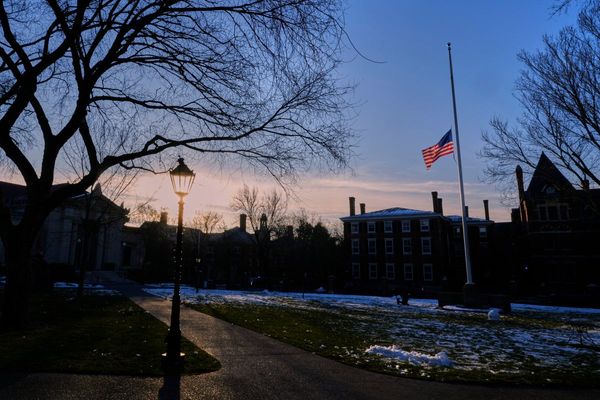Last week, federal agents arrested Milwaukee County Circuit Judge Hannah Dugan for allegedly "obstructing or impeding" federal immigration enforcement and allegedly "concealing an individual to prevent his discovery and arrest." According to FBI Director Kash Patel, "We believe Judge Dugan intentionally misdirected federal agents away from the subject to be arrested in her courthouse, Eduardo Flores Ruiz, allowing the subject—an illegal alien—to evade arrest."
Attorney General Pamela Bondi, meanwhile, characterized Dugan's arrest as a sort of warning shot fired at an overstepping judiciary. "I think some of these judges think they are beyond and above the law and they are not," Bondi declared. If "you're escorting a criminal defendant out a back door, it will not be tolerated."
Yet the criminal complaint in the case, signed by FBI Special Agent Lindsay Schloemer, paints a more complicated picture of what went down.
The complaint states that federal agents were waiting in the public hallway outside of Dugan's courtroom in order to arrest Flores-Ruiz and take him into custody so that he could be deported. Flores-Ruiz, who is also facing local charges of domestic violence, had a hearing scheduled before Dugan that day. According to the complaint, the judge "became visibly angry" when she learned that federal immigration authorities were planning to make the arrest outside of her courtroom. The complaint alleges that Dugan "escorted Flores-Ruiz and his counsel out of the courtroom through the 'jury door,' which leads to a nonpublic area of the courthouse."
Federal agents then allegedly spotted Flores-Ruiz and his lawyer in the public hallway outside of Dugan's courtroom, heading for the elevators. One agent followed them and, according to the complaint, "was on the elevator with Flores-Ruiz" as it descended to the bottom floors. Flores-Ruiz then allegedly exited the building and was arrested on the street after "a foot chase."
Does that alleged behavior by the judge rise to the level of criminal obstruction? It might.
If accurate, the criminal complaint suggests that the judge may have steered Flores-Ruiz away from the main courtroom exit and toward a lesser-used exit because she knew that federal agents had been waiting right outside of her courtroom. And it is reasonable to assume that the agents expected Flores-Ruiz to come out via the main exit, not via the lesser-used exit. So, if the judge did assume that, and did direct Flores-Ruiz to take the lesser-used exit in the hopes of giving those federal agents the slip, her actions may count as criminal obstruction.
At the same time, there is also a constitutional argument that may cut in the judge's favor. In Printz v. United States (1997), the U.S. Supreme Court overruled a provision of the 1993 Brady Handgun Violence Prevention Act that required local police to help the feds enforce federal gun control laws. "The Federal Government may neither issue directives requiring the States to address particular problems," declared the majority opinion of Justice Antonin Scalia, "nor command the States' officers, or those of their political subdivisions, to administer or enforce a federal regulatory program." Scalia's opinion was rooted in principles of federalism and the 10th Amendment.
Those same principles, which make it unconstitutional for the feds to commandeer state officials into enforcing federal gun control laws, also make it unconstitutional for the feds to commandeer state officials into enforcing federal immigration laws. And Dugan, as a Milwaukee Circuit Court judge, is a state official.
It seems safe to say that in this particular case, the feds wanted Dugan to help them enforce federal immigration law by ensuring that Flores-Ruiz left her courtroom via the main exit, where they were planning to arrest him. But, under Printz, the feds may not compel the judge to provide that sort of help. Meanwhile, as a judge, Dugan arguably possesses the discretionary authority within her own courtroom to instruct a party about which exit to use when leaving for the hallway.
In other words, while the feds may not tell Dugan whom to send out of her courtroom and by which exit, Dugan herself may decide whom to send out and by which exit. When viewed in that light, the criminal obstruction case against the judge appears less sturdy.
We'll find out more soon as the case progresses, including hearing Dugan's side of the story and learning what shape her defense will take. In the meantime, expect the Trump administration to use the specter of an allegedly criminal judge as additional political fodder in its broader attack on the independence of the courts.
The post Why the FBI Arrested Judge Hannah Dugan appeared first on Reason.com.







